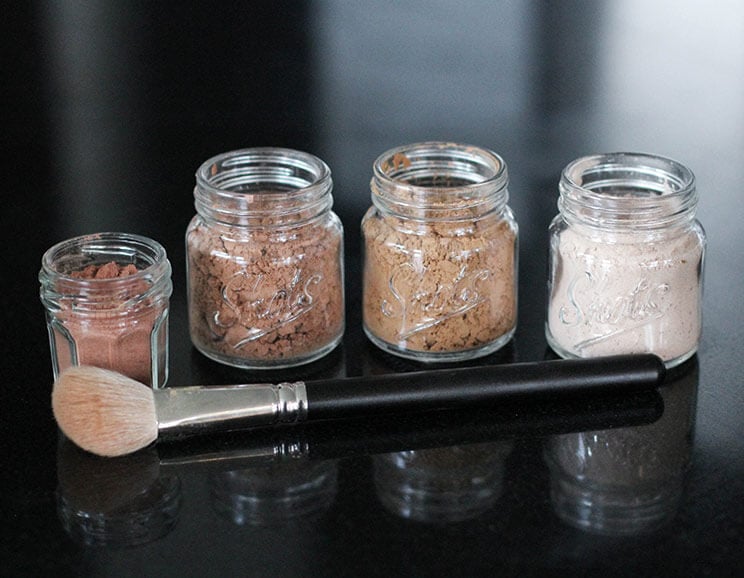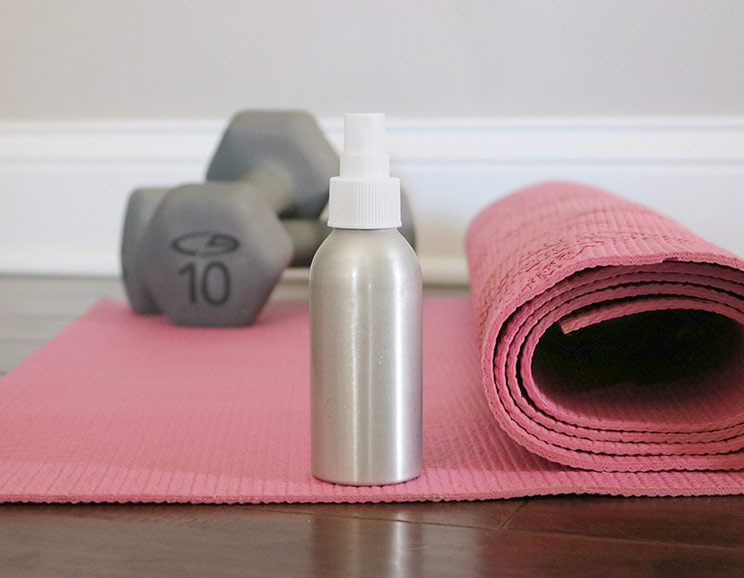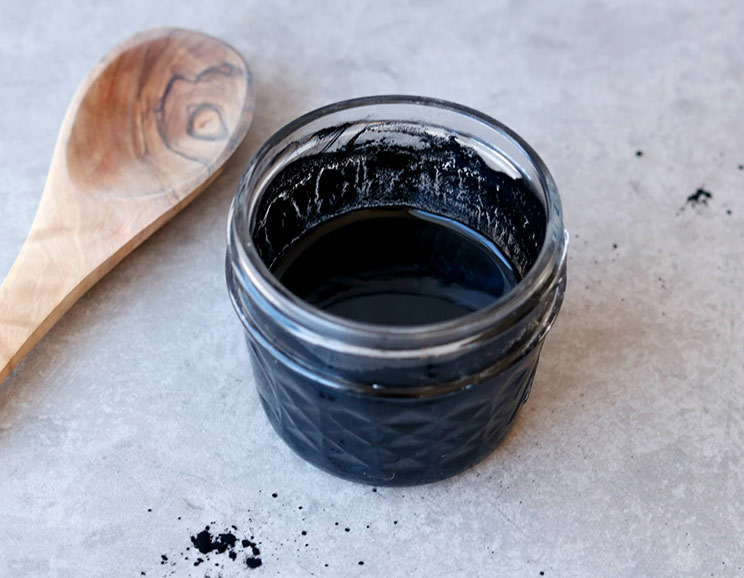Spray yourself with homemade magnesium oil every day for less stress, a stronger heart, and better sleep.
Have you found yourself feeling extra-stressed, not sleeping well, and perhaps suffering from blood sugar swings? You might be low in an extremely important mineral: magnesium.
Read on to see the benefits of getting adequate magnesium, and how you can easily get more of it everyday.
Want to train your brain to be happier and healthier?
Click here to receive our FREE 7-Day Meditation Challenge!
What is Magnesium Oil?
Magnesium is needed for over 325 biochemical reactions in your body. (1) This includes keeping your heart rate steady, maintaining healthy muscle and nerve functioning, and even contributing to bone health.
However, most of us aren’t getting near the recommended daily amount of magnesium we need to optimally sustain all of these biological functions. One of the reasons for this is that our soils have been depleted of magnesium due to over-farming, meaning the fruits and veggies we harvest may have lower amounts.
In addition, the way we supplement with magnesium may also not be optimal. While many supplement orally with magnesium in order to prevent a deficiency, studies show that using it topically may be an all-around better option. (2)
This is where magnesium oil comes in.
Magnesium oil is simply magnesium dissolved into a liquid form. It is applied topically so that it absorbs through your pores (similar to taking an Epsom salt bath), which is shown to have a better absorption rate than taking magnesium orally. (3)
6 Benefits of Magnesium Oil
Rubbing magnesium oil on your skin can increase magnesium levels in your entire body, leading to several amazing benefits. Read on below.
1. Helps Balance Blood Sugar
Interestingly, people with type 2 diabetes often suffer from magnesium deficiencies. In fact, studies associate low magnesium with both the development of type 2 diabetes and metabolic syndrome. (4)
This is because intracellular magnesium, or the magnesium inside your cells, plays a key role in regulating insulin, which plays a huge role in keeping your blood sugar balanced.
2. Improves Sleep

Magnesium also plays a central role in regulating your sleep cycles.
Patients supplementing with magnesium experienced improved insomnia, better sleep efficiency, and reduced early morning awakening. (5)
3. Reduces Stress and Anxiety
Magnesium is involved in a pathway in our body called the HPA axis. Also referred to as the “stress response” system, the HPA axis links the pituitary gland in your brain to your hypothalamus and adrenals, where together they regulate responses to stressful situations.
Studies show that disruptions in this axis through magnesium deficiency can cause behavioral changes and increase anxiety. (6) This goes to show that having optimal magnesium levels can help reduce stress and anxiety just by giving your body and brain the mineral it needs.
4. Lowers High Blood Pressure

Magnesium and calcium both play an important role in regulating your blood pressure. Studies show that when magnesium is deficient, your calcium levels can increase, causing your blood vessels to constrict. This can cause or exacerbate high blood pressure.
When your magnesium intake is adequate, your calcium ratio is lowered and your blood vessels dilate, reducing blood pressure. (7)
5. Maintains Heart Health
Studies with over 1 million participants found that an increase in magnesium intake resulted in a 22 percent reduction in risk of heart failure, as well as a seven percent reduction in the risk of stroke. In addition, researchers also found that with every 100 mg per day increase in magnesium, individuals reduce their risk of overall mortality by 10 percent. (8)
6. Reduces Migraines

If you find yourself suffering from headaches and migraines, there’s a big chance you could be deficient in magnesium. Studies show that up to 50 percent of patients have lowered levels of magnesium during a migraine attack, while additional research suggests that infusing your body with magnesium offers immediate and sustained relief from migraines. (9)
How to Use Magnesium Oil
Spray magnesium oil on any part of your body, including your stomach, arms and/or legs daily. Before bed is an ideal time to do this, since magnesium has a relaxing effect.
Expect to use about 15 sprays for each application. You might notice the magnesium will tingle during the first few applications, but your skin should get used to it shortly after. If not, try diluting the mixture with more water.
You can also follow your magnesium spray with a moisturizer like shea butter or coconut oil. Just make sure toait 20 minutes before doing moisturizing, so the magnesium can absorb completely.
DIY Magnesium Oil Spray


DIY Magnesium Oil Spray
Tools
- Glass bowl
- Spray bottle
Ingredients
- 1/2 cup distilled water
- 1/2 cup magnesium chloride flakes or Epsom salts
Instructions
- Boil your distilled water.
- Add your magnesium flakes or salts to a glass bowl and pour the boiling water on top.
- Stir until completely dissolved, then let the mixture cool.
- Pour into your spray bottle and store at room temperature (the bathroom is a nice place to keep it!).
8 Magnesium-Rich Foods

It never hurts to also indulge in magnesium-rich foods to supplement this magnesium oil recipe. Below are 8 of the best food sources of magnesium – try to get a few servings each day.
- Almonds (19% recommended daily intake in one ounce)
- Dark chocolate (16% RDI in one ounce)
- Pumpkin seeds (18% RDI in one ounce)
- Spinach (20% RDI in one cup)
- Chard (7% RDI in one cup)
- Avocado (14% RDI in one avocado)
- Salmon (13% RDI in 1/2 fillet)
- Bananas (9% RDI in one banana)







 Crispy Baked Keto Chicken Wings
Crispy Baked Keto Chicken Wings







Show Comments